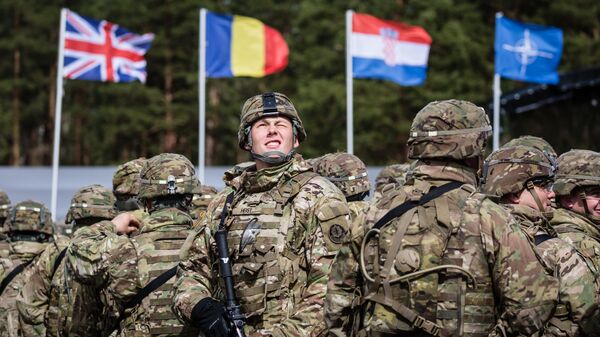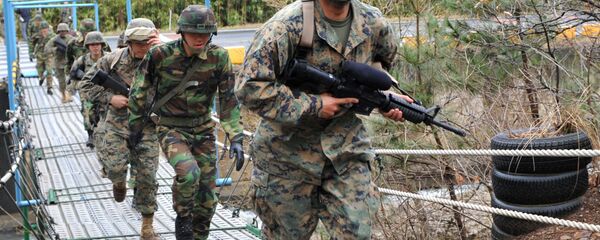Poland's long-cherished dream of increasing the number of US soldiers deployed in the country finally saw a glimmer of hope in mid-August, when Warsaw and Washington struck a deal on new deployments. However, not everything went as Poland had planned, as instead of deploying new forces at a base that was supposed to be named Fort Trump, the Pentagon decided to spread out troops across the country, meaning that Warsaw will have to build or renovate several bases, along with ensuring that they have proper infrastructure.
According to Newsweek Poland, in the community of Powidz alone the Pentagon wants to have 31 warehouses for ammunition and a six-million-litre-capacity fuel depot built for its troops. In addition, Warsaw will have to build barracks, workshops, canteens, and numerous hangars to accommodate soldiers and vehicles. While Poland has eagerly praised the US decision to deploy additional troops, it has rarely delved into the details of how much the country will pay to host them.
Washington's New Policy
Under the provisions of the August agreement, Poland will not only be responsible for building and furnishing bases for American personnel, but will also pay for all the related utility bills, as well as for their food and even cleaning services. US servicemen will also be eligible for a number of benefits, such as free rides on the country’s trains, using airfields, and have free maintenance for their vehicles.
If that was not enough, the Pentagon has reserved the right to burden Warsaw with additional costs, should an emergency arise. For example, US troops will be able to use government and even private property during drills without paying for it. Such terms of engagement with allies have recently become a new normal for Washington, marking a major shift from the earlier model of relations within NATO, Russian military expert Artem Kureev says. He explains that earlier, the US went to great lengths to make sure that their allies regarded their military deployments as beneficial - including in terms of economy, as they would say how many jobs new bases would create and how this would benefit the budget.
“With Trump’s election, everything has changed. He, being true businessmen in nature, has suggested a model of 'security export'. The idea behind it is that allies must pay for all the services [provided by the US military]”, Kureev says.
Under this new model, Poland might spend as much as $130 million per year to accommodate the US troops, regional expert Stanislav Stremidlovsky estimates. He notes that the August agreement between the two states might contain unpublished clauses containing additional costs for Warsaw to cover.
Warsaw is trying to downplay fears of the enormous expenditures by bringing up the UK and Spain as examples, which have made hundreds of millions of dollars on American bases in their countries, but these examples are not relevant when it comes to Poland, Stremidlovsky says. Unlike those two countries, Poland will only host temporary American military bases and they might be not as beneficial for the economy as permanent ones.
Poland Only the First Sign of Change?
The model of cooperation with an ally, as seen in the case of future American deployments in Poland, goes in line with the practices implemented by Washington since the inauguration of Donald Trump. The US president strongly demanded that NATO members meet the voluntary goal of spending 2% of GDP on defence, reportedly threatening to pull out of the alliance otherwise.
In 2020, a non-NATO US ally, South Korea, received news that it must boost its payments for accommodating American forces deployed there by up to five times, facing threats of mass-layoffs of local maintenance personnel if the government does not comply. Washington has since reduced the demands to a fourfold increase in payments, but Seoul has so far only agreed to boost this by 10% from the current $1 billion per year. So far, the talks between the countries remain in a stalemate.




